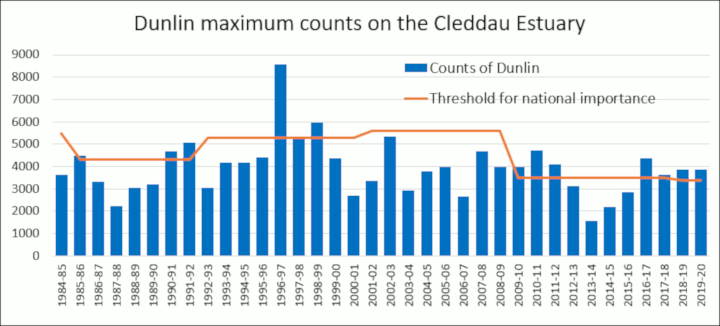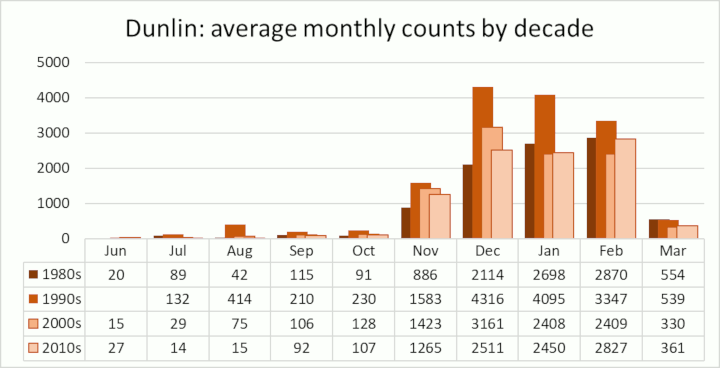 Peak counts of dunlin are erratic, but generally in the range of 2,500 to 5,000 birds. Numbers were higher on average in the 1990s, including a peak of some 8,500 birds in 1996-97 which mirrored an influx seen across the whole UK in that year only. Numbers have been lower since 2000-01.
Peak counts of dunlin are erratic, but generally in the range of 2,500 to 5,000 birds. Numbers were higher on average in the 1990s, including a peak of some 8,500 birds in 1996-97 which mirrored an influx seen across the whole UK in that year only. Numbers have been lower since 2000-01.
To be of national importance for a species, a site must hold a five-year average count above the threshold level. With numbers fluctuating widely, the Cleddau occasionally achieves this figure
Most of the dunlin on the Cleddau are found on the large open mudflats of Pembroke River, Carew-Cresswell and Hook-Sprinkle. Decadal averages indicate that most of the decline has occurred on the Pembroke River and the Carew-Cresswell.

Very few dunlin are counted on other Pembrokeshire WeBS sites - usually around 200 on the Nevern and Teifi combined, occasionally nearer 300.
Monthly indices show that, throughout the UK, numbers are now generally lower all through most of the winter. This is mirrored by a rise in the Netherlands, strongly suggesting that birds migrating from the northeast, and possibly northwest, are stopping on the Wadden Sea. This may be a consequence of the milder weather of recent winter. Previously, in October, after moulting on the Wash & Waddensee, many birds moved westwards to areas of milder winter climate. Between February and April, many birds move east again before migrating to breeding grounds.
Annie Haycock, WeBS Review 2020